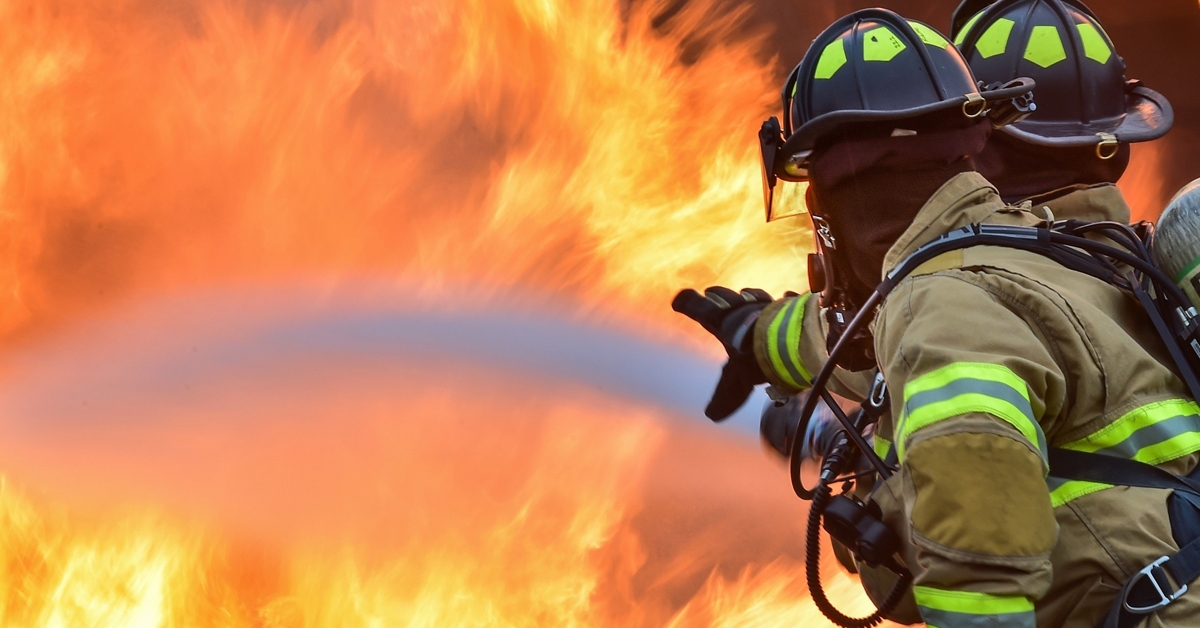The 2017 fire season went down in the record books: Montana blazes burned through 1.2 million acres, destroying 126 structures along the way. With regard to size, it was the worst wildfire season since 1910. Wildfire management costs racked up to a staggering $386 million. Two firefighters lost their lives. People were left feeling helpless and angry.
As we approach the 2018 wildfire season, we wonder what can we learn from last year. How did last year’s fires blow out of control? Why couldn’t we stop them? What can we do differently this year? Unfortunately, no easy answers exist for these questions.
Like cut diamonds, efforts to fight fires are always multi-faceted. And as diamonds are never alike, neither are fires nor the methods used to douse flames. No one-size-fits-all approach exists in firefighting, whether on the prairie or in the forest. Instead, solutions typically begin with the words, “It depends.”
That makes sense, considering facets of firefighting include location, weather, and topography.
They also include nationally shared manpower and resources, whose availability depends on what other disasters might be occurring simultaneously.
Western firefighting teams could as readily be sent to an oil spill in the Gulf of Mexico or hurricane site in Texas as they could to a National Park or Forest within Montana.
No one knows this better than John Thompson, a BLM Fire Management Officer based in Butte.
No Single Solution
“Fire management can’t be done with a broad brush. It must be specific to what will work in your local landscape at the time. One technique won’t cure all problems,” said Thompson, who puts safety at the top of his priority list. “Every tool in firefighting is effective in certain situations, but not in all situations.”
A veteran of 31 fire seasons, Thompson served a rotation as the Incident Commander last summer for two of the state’s most high profile fires—Seeley Lake’s Rice Ridge Fire and Glacier National Park’s Sprague Fire. As part of his job, Thompson assembles inter-agency teams capable of fighting fires anywhere in the nation.
“It’s by design to have people with various areas of expertise—not just federal government—on the teams. Since we want the nuances of each site represented,” explained Thompson, “teams are also comprised of agencies on the state and local levels.”
Keeping Locals Informed
When on assignment, Thompson strives to ensure that locals are well informed about that fire’s status and the actions underway to contain or put it out. He takes that task as seriously as extinguishing flames. To keep people updated, he holds open meetings whenever and wherever communities face possible risk.
“I work for the public, and communicating with the public is one of the key aspects of my job. We need to find out if people are getting the information they need. If not, we ask how we can improve and better communicate without using jargon,” said Thompson, who has held meetings inside buildings as well as outside at the end of ranchers’ driveways.
“At Rice Ridge, we held public meetings six times a week in three locations. Audiences have different concerns, and that changes how we prepare. We don’t like to shoot from the hip.”
Considering how much misunderstanding surrounds this emotional and political issue, these meetings provide an important venue for sharing correct information about fire behavior and for answering questions uppermost on people’s mind.
Common Misperceptions
One common misperception regards smoke. As Thompson explained, “Smoke does come from a burning forest, but not necessarily from trees; it also comes from the ground.”
Another misperception deals with fire suppressants and retardants.
“They can work in lightly forested areas, but a dense tree canopy keeps them from reaching the ground where they need to be,” he noted. “Fuel goes from the ground to treetops.”
Undoubtedly, social media has hugely affected how fire information is disseminated. Somebody who may not attend a meeting may turn instead to Facebook or Twitter for news.
“Everyone wants immediate updates. If you aren’t providing that, people will share their own. We want to be sure the information is timely and accurate. If we don’t give it out, someone will make it up,” commented Thompson, who often travels with a group of people who monitor social media to make certain the information is correct.
“By using this approach, it stops 90 percent of the false information.”
While not every question asked at meetings can be addressed in this space, here are three of the most common questions and the answers people heard.
Q: Why were the fires so hard to put out?
A: “Every fire season is different. Last year, the difficulty was the dryness. We saw fires move at night, which is unusual. At Seeley Lake, 8,000 acres burned one night. The next night, 40,000 acres burned. Temperatures didn’t cool off at night.
“There was no humidity or dew in the morning to help, so the fires never stopped burning,” explained Thompson. “We were also competing against other natural disasters and fires for manpower, aircraft, logistical support equipment, and mobile kitchens. In fire seasons like last year’s, we exhausted all our resources nationwide, including manpower. We even ran out of caterers capable of feeding a small community.”
By all accounts, the season was historic. According to the Daily Inter Lake, $386 million was spent on fighting Montana fires. The destruction included 1.2 million acres of land and 126 structures with the biggest loss being the lives of two firefighters.
Q: Why isn’t more logging being done to prevent fires?
A: Thompson readily acknowledged that decreasing the fuel supply means fewer flames, but those words are easier to say than put into effect.
“Fires are an exercise in probability. You never know where they’ll start. There are historic lightning belts, but it’s still a card game. Selectively thinning—versus clear cuts—could be a treatment; it opens things up,” explained Thompson, a forester by education. “But you can’t predict lightning or where a cigarette will get tossed or a campfire will be left burning. Treatment has to be in the right place, and who knows where that is. If people think logging is a magic pill to stop all fires, they’re fooling themselves.”
Q: Why weren’t more aircraft used?
A: Although it may not have appeared to be the case last year, more helicopters and air tankers were deployed early in the fire season than many people realized.
“So many aircraft flew out of Helena, we ran the airport out of fuel,” commented Thompson. “But if California had happened sooner, Montana would have lost a big portion of resources. When those fires hit, our aircraft disappeared in a matter of hours.”
Finances also play a role as $10,000 to $20,000 can be spent in a matter of 30 seconds. Should an aircraft be available to drop retardant, and if weather conditions are cooperative, the flight still must occur at the right place at the right time. It also must be backed up with enough people on the ground to build or strengthen a fire line, people whom Thompson may not have then.
As it turns out, the limiting factor in ending many fire scenarios is running out of fire crews. This often happens before aircraft, retardant, suppressant, funding, or wraps for buildings cease to exist.
“We’ve gone from about 450 to 250 crews nationwide. That stems partly from implementing more stringent physical requirements to prevent injuries and from drug testing. It’s a challenge to get enough crews to get the work done, ” he said. “Many markets are competing for the same pool of people. I’m not convinced it’s lack of a work ethic. It’s hard work. Some thrive on it, but not everyone. I slept in a tent 53 nights last summer; some people don’t want to do that. It’s not camping.”
Since a national multi-agency command group reviews the countrywide fire picture, its members rank every fire based on population density and numbers of houses and businesses in an affected region. Unsurprisingly, remote wild land and range fires rarely receive top priority. As Thompson pointed out, four factors are weighed—threats to life, threats to improvements of property both personal and community, the value of resources such as timber and land that can have economic impacts, and politics.
Since many Montanans live in an urban-wild land interface where houses abut forests, Thompson emphasized that homeowners can take steps to help protect their property. Without missing a beat, he began listing them.
“Don’t put six cords of firewood under your house. It’s okay to have trees near you, but thin them out. Prune trees, so they can’t become ladders; fires can’t be fought in tree tops. Remove available fuel and create a defensible space,” he added. “Fire is part of the forested environment, and we have to figure out how to coexist together. It’s a partnership if you live in the woods, and you need to be prepared. Firefighters may not have the time or resources to save a home.”
Thompson also encouraged people to clean out gutters full of volatile pine needles and to remove any jute doormats. As he noted, “It takes very little to start a big fire.”
Lastly, he suggested that homeowners get a free preseason assessment of their risk factors through taxpayer-funded firewise.org and the Montana Department of Natural Resources.
While 2017 was not a fire year with many triumphs, Thompson did find a sliver of a silver lining in that smoky black cloud.
“Whenever we can bring our firefighting plans to fruition and no one is hurt and no structures are lost, we consider that a success. But last year’s season was more frustrating than ever, and our victories were small,” he admitted. “In those cases, when we can get everyone home safely at the end of a shift, we see that as a victory.
“Some look at firefighting as a war. We don’t. War comes with an acceptable loss rate. We can’t work that way. You can’t be up there fighting the fire at all times. It’s not humanly possible or safe.”
Thompson has met Montanans thankful for his teams’ efforts and others who were more disgruntled than grateful. In the latter case, he calmly reminds people that he and his crew are there as problem solvers, not magicians.
“Have patience with the firefighting process,” he urged. “We want the fire out as much or more than the public does. We’re all trying to get to the same end state.”
For information on current fires, visit websites for local, state and federal government agencies as well as InciWeb.org. Several good mobile apps for tracking area wildfires are also available for download: WLF Map, Wildfire, and Fire Finder to name a few. Check your app store.











